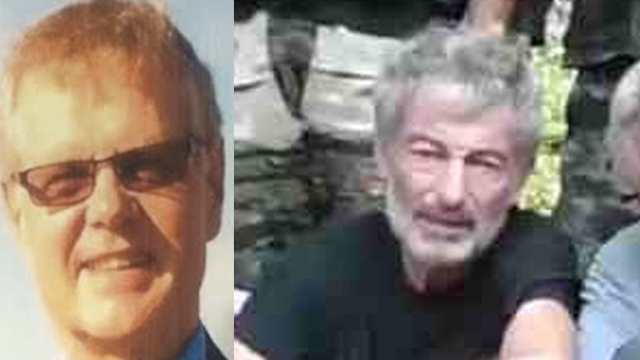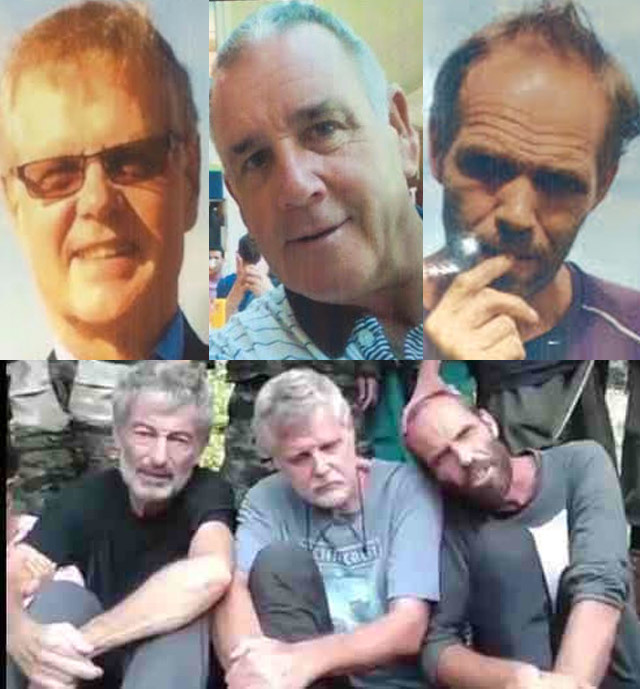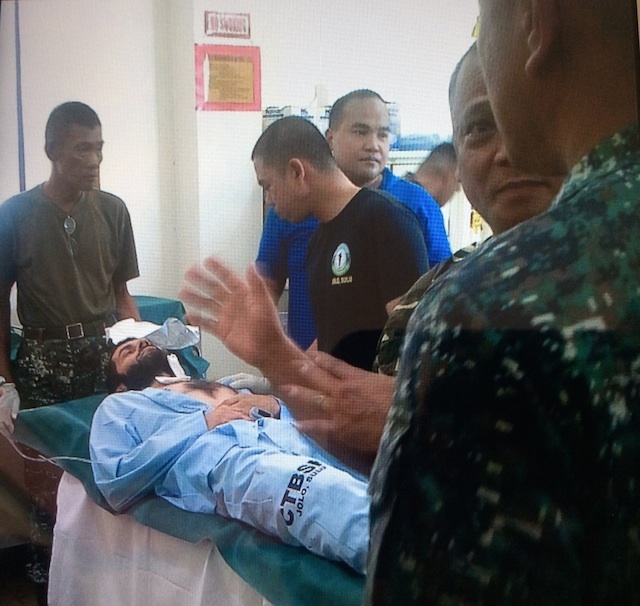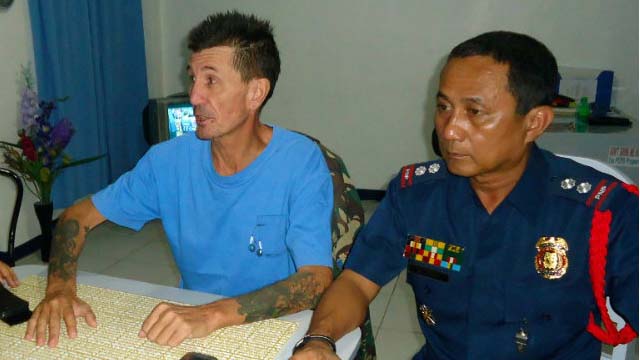They include 14 Indonesians and 4 Malaysians

The beheading of a Canadian hostage in Sulu on Monday, April 25, was a grisly reminder of the state of lawlessness in the province, where at least 22 foreign hostages are held captive by the Abu Sayyaf.

KILLED. John Ridsdel before he was kidnapped and during his captivity in Sulu. Photos courtesy of PNP
John Ridsdel, a
tourist who visited Samal
Island Calgary , Alberta
Two months after
the September 2015 abduction, the Abu Sayyaf,
in a video, demanded P1 billion ($21 million) each in exchange for
the release of Ridsdel, Hall, the other foreigner caught with them, Norwegian
resort manager Kjartan Sekkingstad, as well as a Filipina, Marites Flor.
In that
one-minute 27-second video released on November 3, 2015, the 4 hostages were
shown sitting in front of armed men, whose faces were covered with masks.The
video, posted by the United States-based jihadist monitor SITE Intelligence
Group, showed the hostages in a jungle setting

HOSTAGES. John Ridsdel, Robert Hall, and Kjartan Sekkingstad prior to their abduction (above) and during captivity (below).
In the video, one unmasked
militant is seen holding up a knife to the 3 foreigners, who took turns
appealing for help and asking that the ransom be paid. Similar videos were
posted over several months in which the hostages looked increasingly frail.

ESCAPE. Swiss Lorenzo Vinciguerra was in captivity for 2 years. File photo from Western Mindanao Command
Japanese Toshio
Ito was kidnapped nearly 3 years ago from Pangutaran Island
At one point, the
Philippine police believed the 64-year-old “treasure hunter,” a Muslim convert,
had joined the Abu Sayyaf – a form of Stockholm Syndrome which had him acting
as the group’s cook. However, this was disputed by other nations, including the
United States
Rodwell's
ransom
An Australian was
also a former Abu Sayyaf captive: Warren Richard Rodwell, who was kidnapped in
December 2011 in Ipil, Zamboanga del Sur, and was also brought to Sulu.

RELEASED. The Abu Sayyaf released Australian national Warren Rodwell (L) on March 23, 2013, more than 14 months after kidnapping him from his home in Zamboanga. Photo by Jong Cadion/AFP PHOTO
The Abu Sayyaf
initially demanded P1 million ($21,327.92) for his release, then upped it to
P40 million ($853,116). When he was freed two years later, in March 2013,
Rodwell's kidnappers had agreed to reduce the ransom to P5 million ($106,659).
(READ: The
inside story: Ransom and Rodwell)
The Abu Sayyaf
has turned kidnapping-for-ransom into a cottage industry.
Handing hostages
to larger, better armed groups is a common practice. Larger groups can better
protect and evade authorities. All involved then get a cut of the ransom,
according to Abu Sayyaf members.
The Indonesian
company that employs the 10 kidnapped Indonesian sailors is willing to pay $1
million for their release, according to Indonesia's
Chief
Security Minister Luhut Pandjaitan.
Transport
Minister Igansius Jonan earlier told Indonesian media that coal barges
currently in Philippine waters will be escorted back by the Indonesian
military. For ships that cannot be escorted back by the military for the
moment, like those in Tarakan and Manado

No comments:
Post a Comment
Note: Only a member of this blog may post a comment.